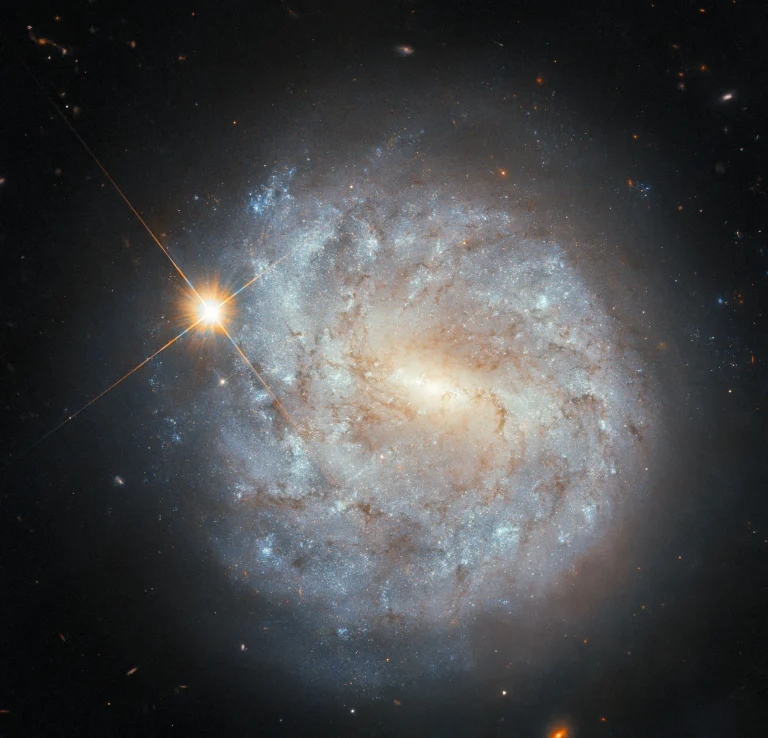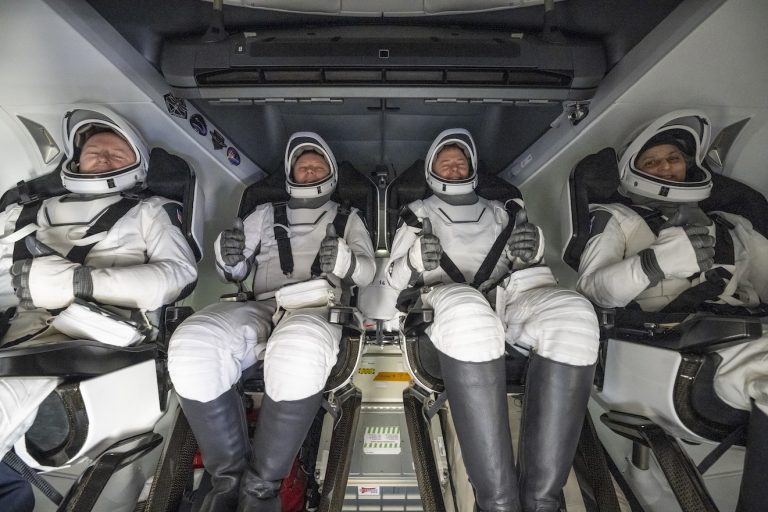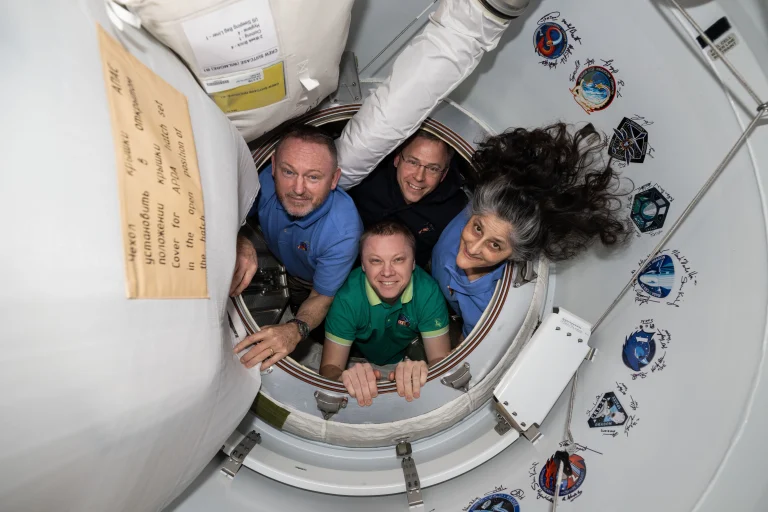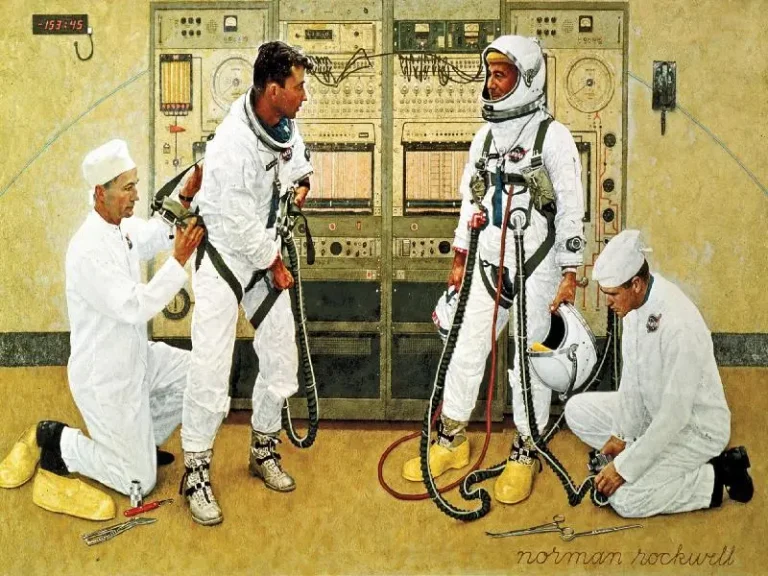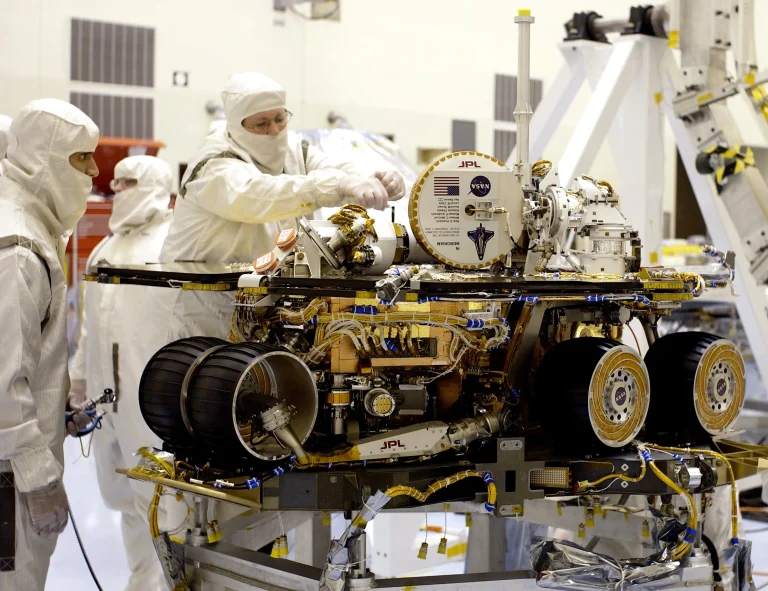ESA/Hubble & NASA, J. Tan (Chal
This NASA/ESA Hubble Space Telescope image presents a visually striking collection of interstellar gas and dust. Named RCW 7, the nebula is located just over 5,300 light-years from Earth in the constellation Puppis.
Nebulae are areas rich in the raw material needed to form new stars. Under the influence of gravity, parts of these molecular clouds collapse until they coalesce into very young, developing stars, called protostars, which are still surrounded by spinning discs of leftover gas and dust. The protostars forming in RCW 7 are particularly massive, giving off strongly ionizing radiation and fierce stellar winds that transformed the nebula into a H II region.
H II regions are filled with hydrogen ions — H I refers to a normal hydrogen atom, while H II is hydrogen that lost its electron making it an ion. Ultraviolet radiation from the massive protostars excites the hydrogen in the nebula, causing it to emit light that gives this nebula its soft pinkish glow.
The Hubble data in this image came from the study of a particularly massive protostellar binary named IRAS 07299-1651, still in its glowing cocoon of gas in the curling clouds toward the top of the image. To expose this star and its siblings, astronomers used Hubble’s Wide Field Camera 3 in near-infrared light. The massive protostars in this image are brightest in ultraviolet light, but they emit plenty of infrared light too. Infrared light’s longer wavelength lets it pass through much of the gas and dust in the cloud allowing Hubble to capture it. Many of the larger-looking stars in this image are foreground stars that are not part of the nebula. Instead, they sit between the nebula and our solar system.
The creation of an H II region marks the beginning of the end for a molecular cloud like RCW 7. Within only a few million years, radiation and winds from the massive stars will gradually disperse the nebula’s gas — even more so as the most massive stars come to the end of their lives in supernova explosions. New stars in this nebula will incorporate only a fraction of the nebula’s gas, the rest will spread throughout the galaxy to eventually form new molecular clouds.
影像来源: ESA/Hubble & NASA, J. Tan (Chal
这张NASA/ESA哈勃太空望远镜拍摄的图像展示了一组引人注目的星际气体和尘埃。该星云名为RCW7,位于距离地球5,300光年的船尾座。
星云富含形成新恒星所需的原材料。在引力的影响下,这些分子云的一部分坍缩,直到它们合并成非常年轻的、正在形成的恒星,即原恒星,这些恒星仍然被残余气体和尘埃的旋转圆盘所包围。RCW 7中形成的原恒星特别大,释放出强烈的电离辐射和猛烈的恒星风,将星云转变成了H II区。
H II区充满了氢离子——H I指的是正常的氢原子,而H II指的是失去电子而成为离子的氢。来自大质量原恒星的紫外线辐射激发了星云中的氢,使其发光,赋予这个星云柔和的粉红色光芒。
这幅图像中的哈勃数据来自对一颗特别巨大的原恒星双星IRAS 07299-1651的研究,这颗双星仍然在图像顶部卷曲的云层中发光的气体茧中。为了曝光这颗恒星和它的兄弟姐妹,天文学家使用了哈勃的第三代广域照相机在近红外光下成像。这张照片中的大质量原恒星在紫外光下最亮,但它们也发出大量的红外光。红外光的波长较长,这使得它能够穿过云中的大部分气体和尘埃,从而让哈勃能够拍摄到它。图中许多看起来较大的恒星是前景恒星,不属于星云的一部分。相反,它们位于星云和太阳系之间。
H II区的产生标志着像rcw7这样的分子云结束的开始。在仅仅几百万年的时间里,来自大质量恒星的辐射和风将逐渐驱散星云的气体——甚至当最大的大质量恒星在超新星爆炸中走到生命的尽头时。星云中的新恒星将只吸收星云气体的一小部分,其余的气体将在整个星系中扩散,最终形成新的分子云。



